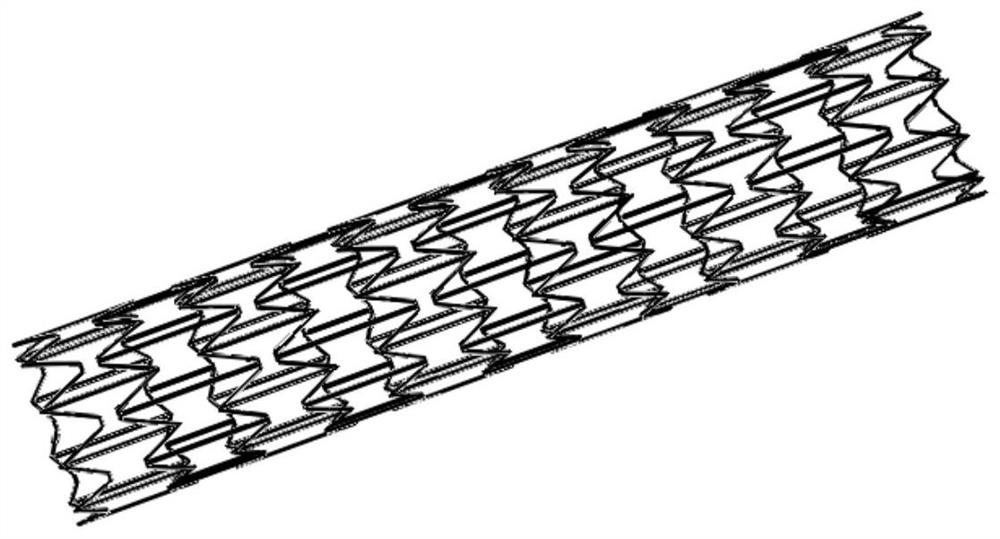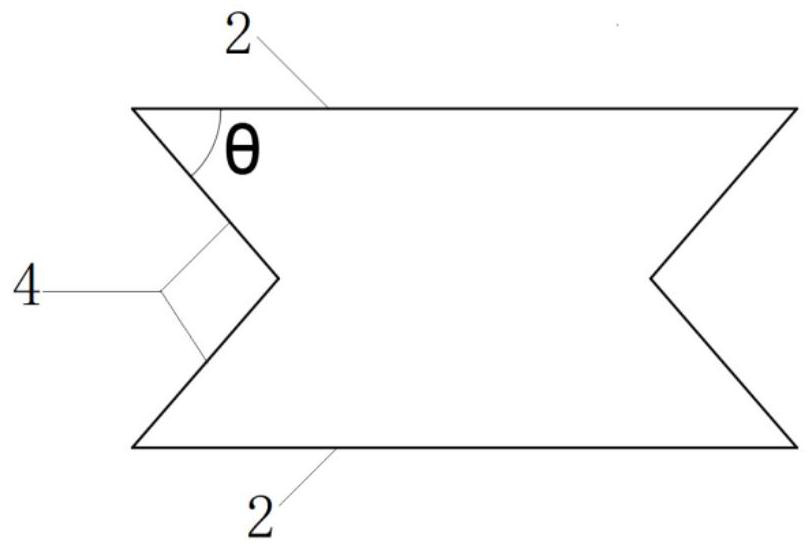Stent suitable for urethral bent part
A bending and urethral technology, applied in stents, additive processing, etc., can solve problems such as stent fixation failure, decrease in inner diameter, stent displacement, etc., to achieve a good bending effect and reduce the effect of urethral straightening
- Summary
- Abstract
- Description
- Claims
- Application Information
AI Technical Summary
Problems solved by technology
Method used
Image
Examples
Embodiment 1
[0035] This embodiment provides a bracket suitable for the curved part of the urethra. Such as figure 1 and figure 2As shown, the urethral stent is in a tubular structure, and the wall thickness of the tubular structure is 0.5mm. The tubular structure is in a straight tube state before implantation, and the tube wall of the tubular structure in the straight tube state is formed by arranging and combining concave hexagonal structures 1, and the concave hexagonal structures 1 are arranged along the circumference The number arranged in the direction is 4-10, and the number of the concave hexagonal structure 1 in this embodiment arranged in the circumferential direction is 10, figure 2 It is a schematic diagram of half of the stent in the circumferential direction in the straight tube state described in this embodiment. The inner diameter of the tubular structure in a straight tube state is 8 mm.
[0036] Such as image 3 As shown, each of the concave hexagonal structures 1...
Embodiment 2
[0044] This embodiment provides a bracket suitable for the curved part of the urethra. The urethral stent is in a tubular structure, and the wall thickness of the tubular structure is 1 mm. The tubular structure is in a straight tube state before implantation, and the tube wall of the tubular structure in the straight tube state is formed by an arrangement and combination of concave hexagonal structures 1, and the concave hexagonal structure in this embodiment 1 The number arranged along the circumference is 10, Figure 5 Shown is a schematic diagram of half of the stent in the circumferential direction in the straight tube state described in this embodiment. The inner diameter of the tubular structure in a straight tube state is 8 mm. The whole urethral stent in this embodiment is made of magnesium alloy material.
[0045] Such as image 3 As shown, each of the concave hexagonal structures 1 includes two parallel straight sides 2, two groups of concave structures are arra...
Embodiment 3
[0053]This embodiment provides a bracket suitable for the curved part of the urethra. The stent in this embodiment can be bent in multiple directions after being implanted in the human body, which are the overall bending in the first direction and the overall bending in the second direction, wherein the first direction is from the top to the bottom, and the second direction is the overall bending. The two directions are from left to right, that is, the first direction is perpendicular to the second direction. The urethral stent is in a tubular structure, and the wall thickness of the tubular structure is 0.5 mm. The tubular structure is in a straight tube state before implantation, and the tube wall of the tubular structure in the straight tube state is formed by an arrangement and combination of concave hexagonal structures 1, and the concave hexagonal structure in this embodiment 1. There are 10 pieces arranged in the circumferential direction, and the inner diameter of the...
PUM
 Login to View More
Login to View More Abstract
Description
Claims
Application Information
 Login to View More
Login to View More - R&D
- Intellectual Property
- Life Sciences
- Materials
- Tech Scout
- Unparalleled Data Quality
- Higher Quality Content
- 60% Fewer Hallucinations
Browse by: Latest US Patents, China's latest patents, Technical Efficacy Thesaurus, Application Domain, Technology Topic, Popular Technical Reports.
© 2025 PatSnap. All rights reserved.Legal|Privacy policy|Modern Slavery Act Transparency Statement|Sitemap|About US| Contact US: help@patsnap.com



